Question 1: 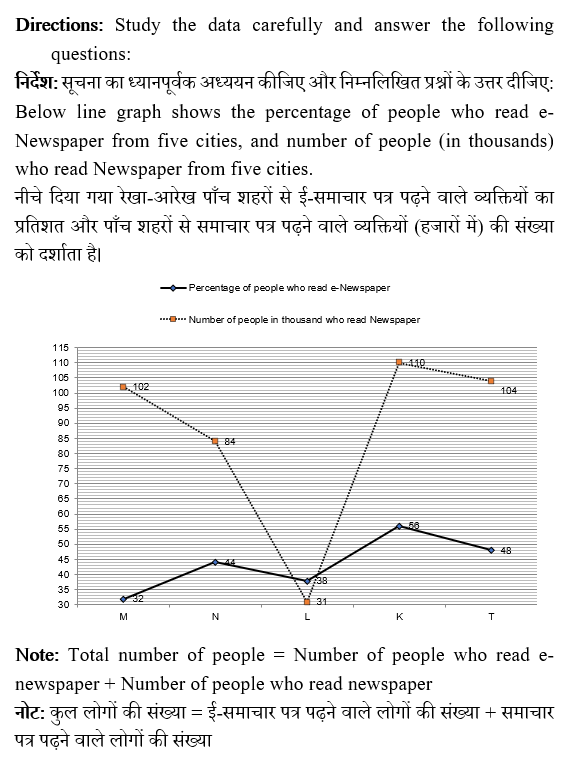
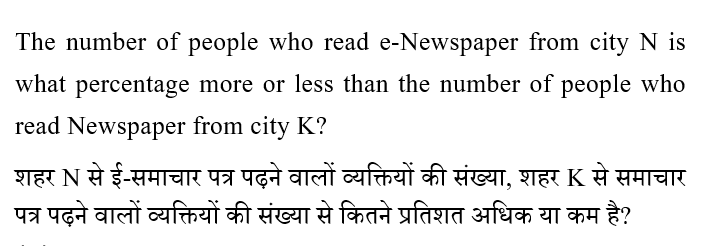
35%
30%
40%
50%
45%
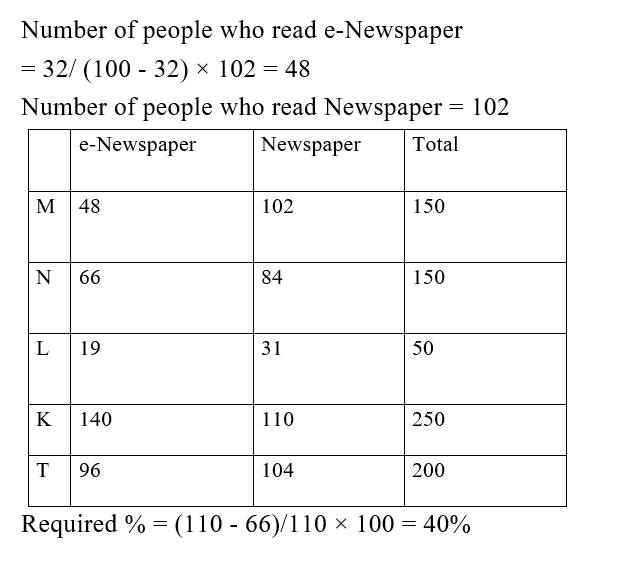
Question 2: 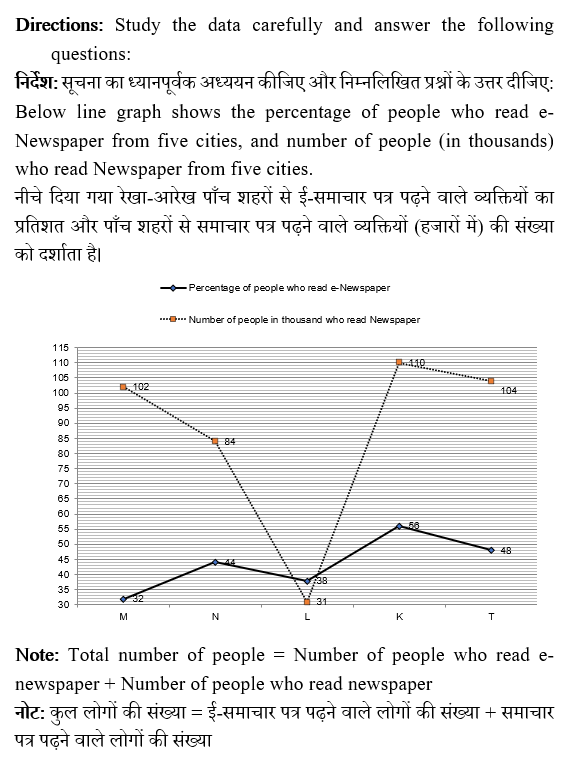

106
114
101
112
108
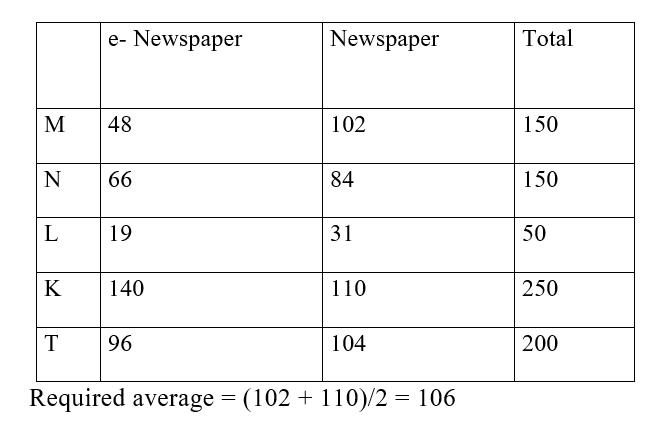
Question 3: 

5: 7
4: 7
3: 7
4: 5
3: 8
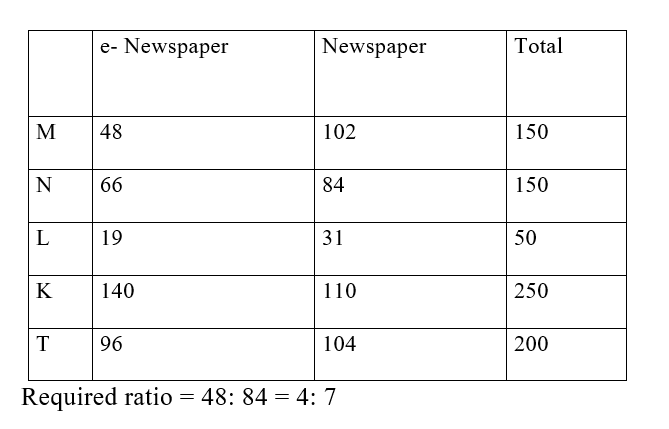
Question 4: 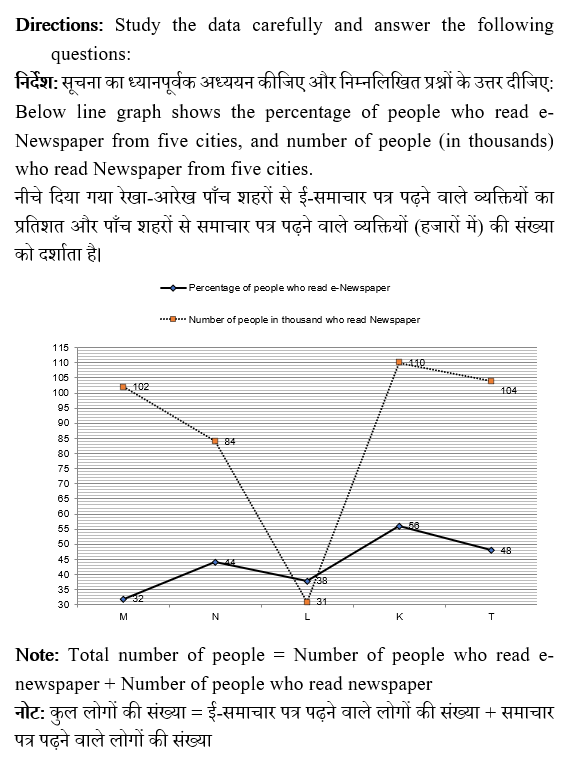

105.5%
62.5%
87.5%
77.5%
95.5%

Question 5: 

28
18
19
38
42
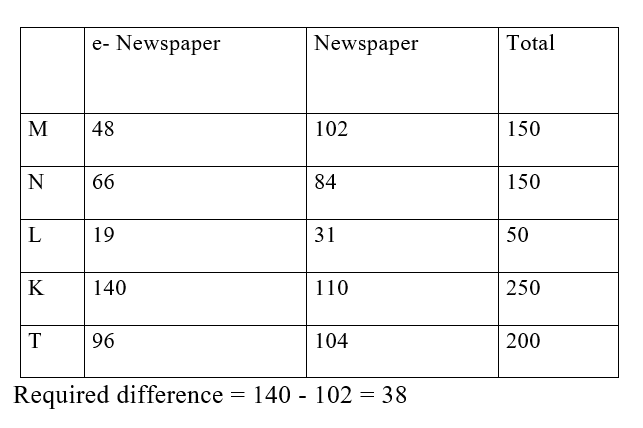
Question 6: 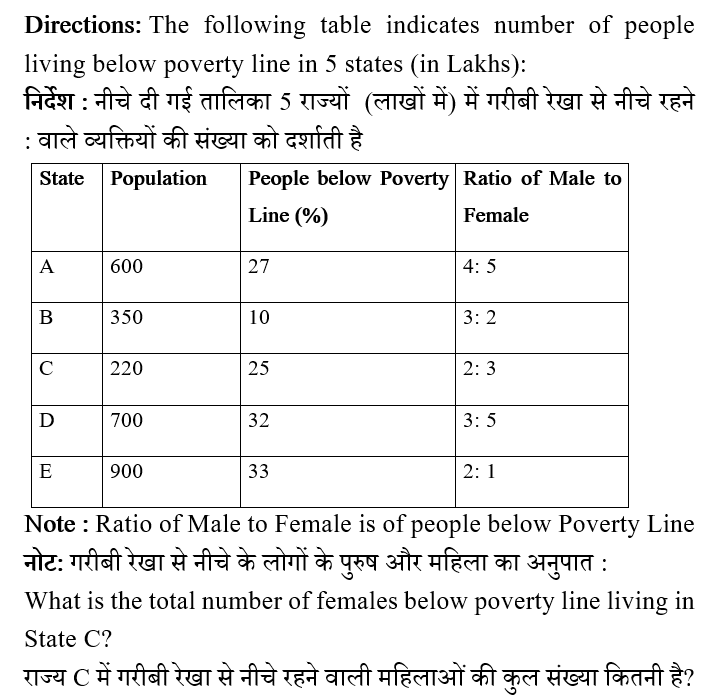
44 lakhs / लाख
55 lakhs / लाख
22 lakhs / लाख
33 lakhs / लाख
66 lakhs / लाख
Population below poverty line in State C = (25 × 220)/100 = 55 lakhs
Female Population below poverty line in State C
= (3/5) × 55 = 33 lakhs
Question 7: 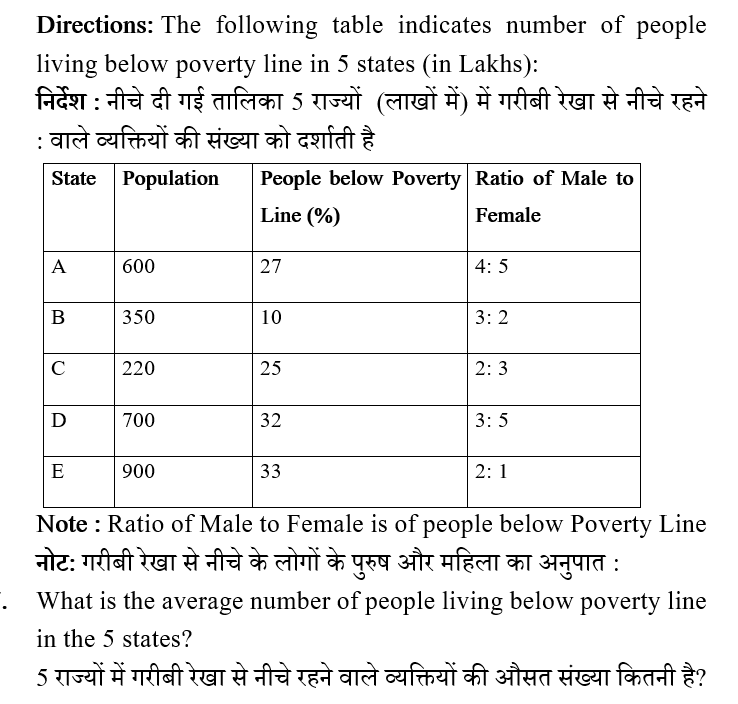
154.6 lakhs / लाख
132.9 lakhs / लाख
162.6 lakhs / लाख
129.8 lakhs / लाख
140 lakhs / लाख
Population below poverty line in State A = (27/100) × 600 = 162 lakhs
Population below poverty line in State B = (10/100) × 350 = 35 lakhs
Population below poverty line in State C = (25/100) × 220 = 55 lakhs
Population below poverty line in State D = (32/100) × 700 = 224 lakhs
Population below poverty line in State E = (33/100) × 900 = 297 lakhs
Sum of population below poverty line = 773 lakhs
Required Average = 773/5 = 154.6 lakhs
Question 8: 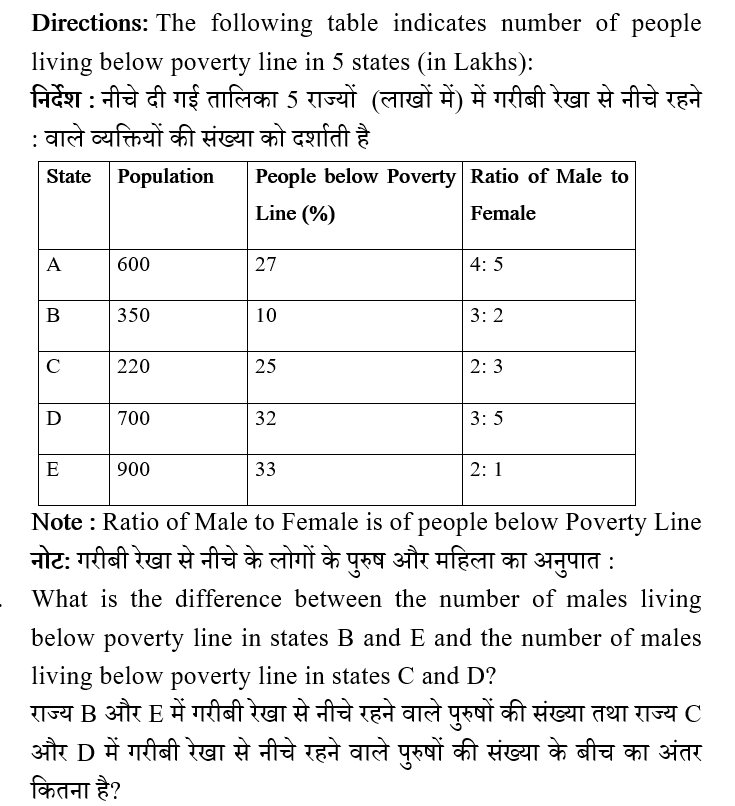
42 lakhs / लाख
113 lakhs / लाख
97 lakhs / लाख
121 lakhs / लाख
53 lakhs / लाख
Males living in poverty in state C = (2/5) × 55
= 22 lakhs
Males living in poverty in state D = (3/8) × 224
= 84 lakhs
Males living in poverty in state B = (3/5) × 35
= 21 lakhs
Males living in poverty in state E = (2/3) × 297
= 198 lakhs
Required difference = (198 + 21) - (22 + 84)
= 113 lakhs
Question 9: 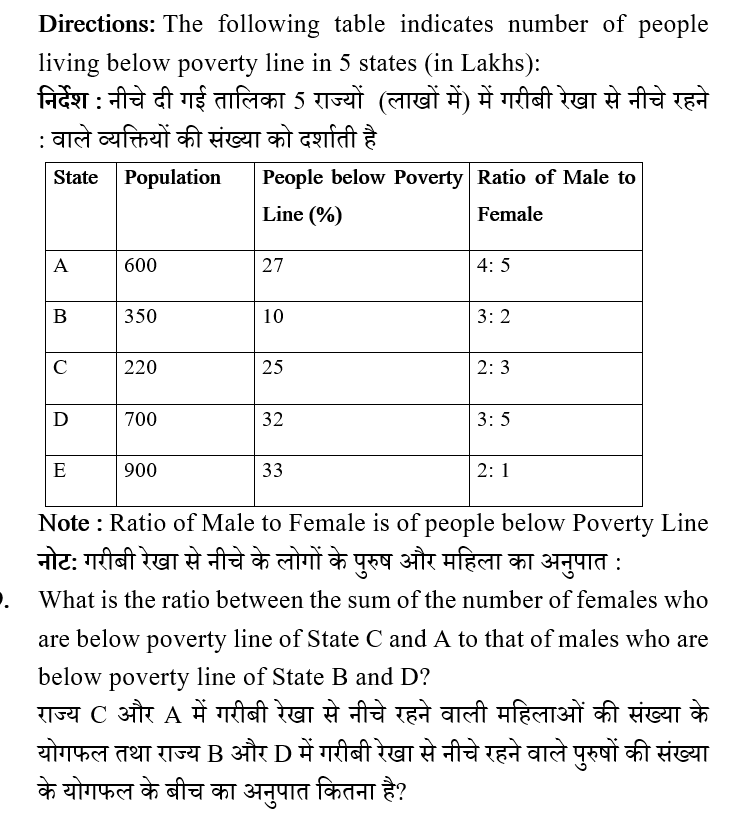
25 : 23
None of these / इनमें से कोई नहीं
23 : 25
35 : 41
41 : 35
Females living in poverty in state A = (5/9) × 162
= 90 lakhs
Females living in poverty in state C = (3/5) × 55
= 33 lakhs
Males living in poverty in state D = (3/8) × 224
= 84 lakhs
Males living in poverty in state B = (3/5) × 35
= 21 lakhs
Required Ratio = 123 : 105 = 41 : 35
Question 10: 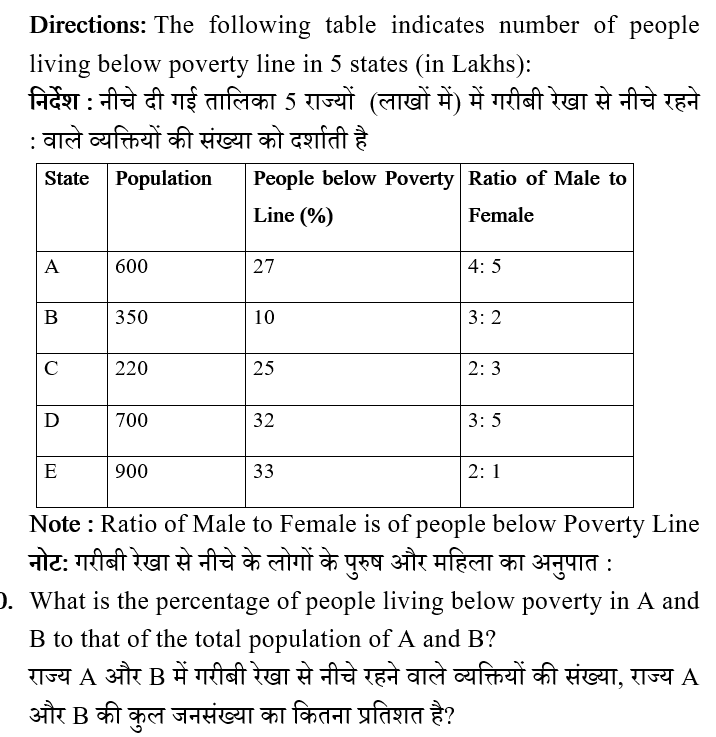
28.2%
34.2%
15.3%
20.7%
23.7%
Population below poverty line in State A = (27/100) × 600 = 162 lakhs
Population below poverty line in State B = (10/100) × 350 = 35 lakhs
Total Population = 950 lakhs
Required Percentage = (197/950) × 100 = 20.73%
